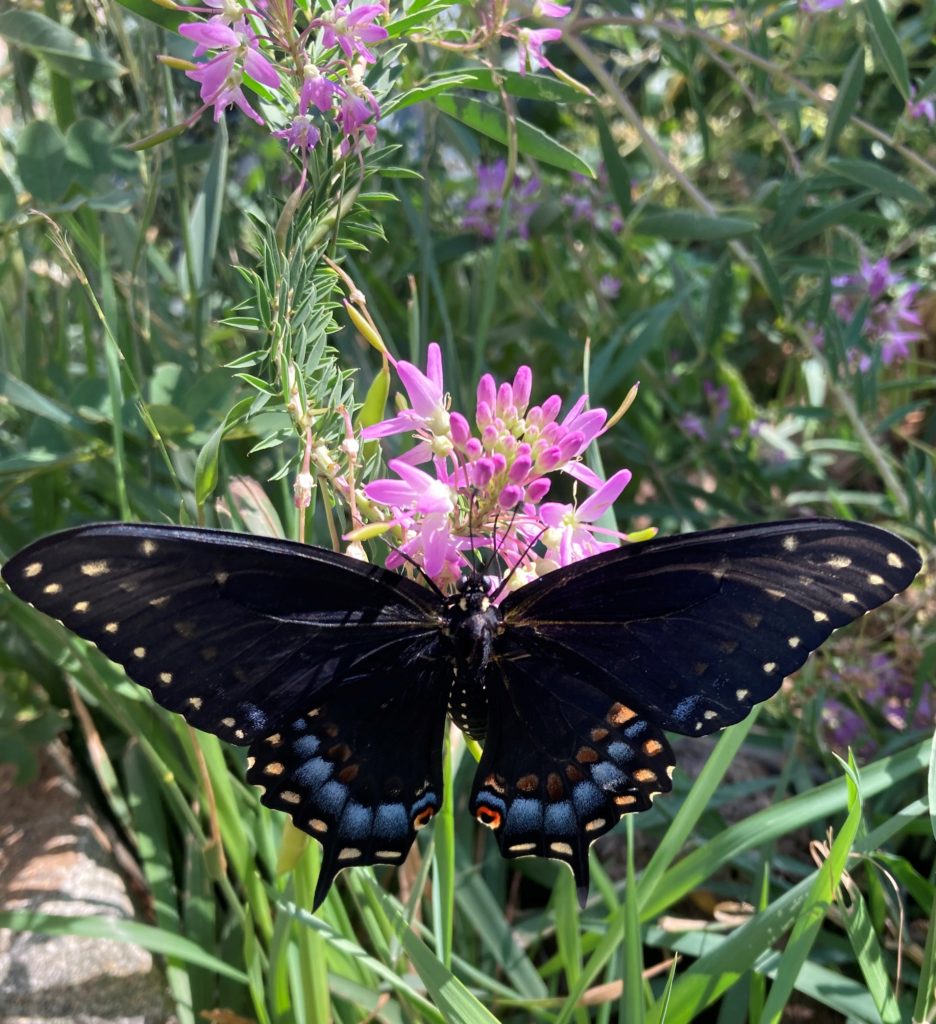
Butterflies, moths, native bees, hummingbirds and some bats drink flower nectar for their food. These are pollinators. They visit many different plants every day and carry pollen on their bodies, spreading it from flower to flower.
Most plants need pollen from other plants to create fruits and seeds which both the plants and humans need to survive.
Each pollinator has plants they like best to drink nectar from. Plant flowers that are single petaled as it is easier to reach the nectar. Leaves and sticks in the garden are habitat for pollinators to overwinter in. Leave yard cleanup until they awaken in spring. Keep a shallow pan of water with gravel for them to drink.
Some superfoods for bees:
Bee Balm, Blanket Flower, Blue mist Spirea, Borage, Catmint, Catnip, Comfrey, Fernbush, Anise Hyssop, Blue Hyssop, Lavender, Motherwort, New Mexico Sunflower, Poppy, Prairie Clover, Salvias, Yarrow
Some superfoods for Hummingbirds:
Four O’Clocks, Cypress Vine, Penstemons, Hollyhocks, Hyssops, Purple Coneflower, Salvias, Torch Lily, Trumpet Vine
Butterflies and moths have specific plants that after they breed, the female lays her eggs on. These are called host plants. After the eggs hatch the caterpillars eat the leaves of the host plant until they are big enough to form a chrysalis or cocoon.
While some caterpillars hatch on and eat plants in your garden, if we plant a bit more of the host plants it will ensure there will be enough food for everyone.
Some host plants for Butterflies:
Milkweeds, Dill, Parsley, Fennel, Lovage, Rue, Plums, Sand Cherry, Chokecherry, Cottonwood, Willow, Prairie Clover, Purple Coneflower, Sunflower, Globemallow
Some superfoods for Butterflies:
Milkweed, Ironweed, Purple Coneflower, Oregano, Zinnia, Hollyhock, Blue Mist Spirea, Fernbush, Yarrow, Blanket Flower, Black Eyed Susan, Salvias, Poppies